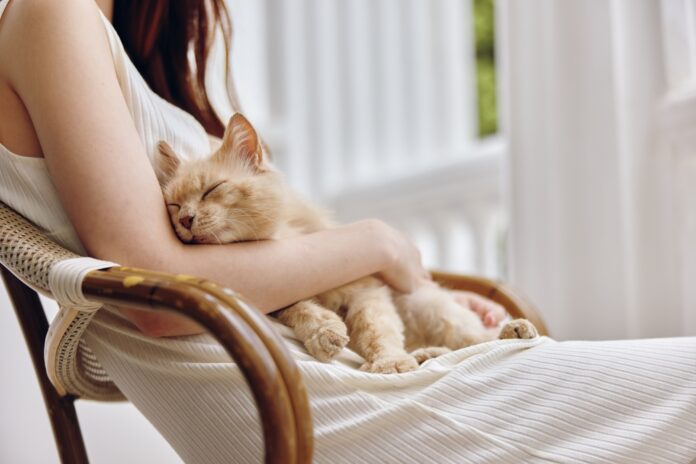Camping with cats

Have you ever considered taking your cat with you on a camping trip? It might be easier than you think, and she will love the experience.
Believe it or not, I have taken my cats camping with me since 2001. Granted, I rescued both of them as campground strays. Tina came to us wounded. We made her comfortable in our motor home with a bed, food, water, litter box, windows and enough floor space for a scratching post and playtime. Magellan was actually born in the motor home and loves hanging out there. So they’re both used to a camp setting.
But transporting them back and forth between house and campground for the past ten years, while ensuring their comfort and safety when living in our motor home, has taught me a lot about successfully camping with cats. The following eight rules will help make it possible for you to take your kitty camping too.
Rule #1 — know your cat
First of all, consider whether your cat truly has the right temperament to go camping with you. You might find it fun and relaxing, but some cats are absolute homebodies and find being removed from familiar surroundings extremely stressful. If you think your cat will freak out, then leave him at home with a trusted caregiver. You might miss him, but he’ll be happier and more comfortable in his own environment.
Otherwise, consider the following traits: is your cat a social butterfly, shy, curious, cautious, indoor, outdoor, easy to handle or squirmy? Does he like to walk or be carried? Does he pay attention to simple commands? Knowing your cat’s personality and habits will help you meet his needs and keep him safe while at the campground.
Rule #2 — keep him comfortable
Unless your cat is a calm and seasoned traveler, tent camping is probably not a good way to start. A trailer, camper or motor home is more secure and homelike. Give your cat all the comforts of home in the vehicle – food and water bowls, litter box, toys, bedding, etc. – and let him spend time in the camper before you leave on a trip so it becomes familiar to him. Take him on a trial run to see how he reacts to all the sounds that go with traveling.
Rule #3 — take a carrier with you
Each cat should have his own carrier in the camper or motor home. He should remain in his carrier whenever the vehicle is in motion, or when the camper door is open. Otherwise, leave the carrier accessible and open so your cat can go into it any time he wants. I place our carriers between the front seats with the doors open toward the living area of our motor home. They sit on strong plastic storage boxes on non-slip materials.
Rule #4 — don’t change his water or diet
Pack the same food and water for your cat as he consumes at home. A sudden change in food or water could result in diarrhea.
Rule #5 — make sure your destination is pet-friendly
Most campgrounds are animal-friendly but do have rules. Some charge extra for your animals. My cats enjoy off-season camping because it provides them with more uninterrupted outside time.
Rule #6 — never leave him in an unventilated camper or trailer
Open a vent or screened window; just keep in mind that cats are excellent escape artists. Air conditioning is really the best option if you are taking your cat camping.
Rule #7 — make sure he gets daily exercise
Do not let your cat roam the campground alone. If he’s used to being indoors, keep him inside the camper with regular interactive play time, the way you would at home. If he is trained to stay near you, or on a harness and leash, take him outdoors to explore. Stay with and supervise your cat at all times when he’s outside, whether he’s on a leash or not; never leave him tethered outside the camper alone.
Rule #8 — protect his health
Keep in mind that there will be other animals at the campground, including wildlife and possibly dogs and stray or feral cats. I encourage you to respect them with a “live and let live” attitude of compassion, but at the same time prevent your own cats from interacting with them. Rabies shots are mandatory in most regions and you should also have titer tests done on your cat before you leave to ensure he’s protected from other infectious diseases.
Camping with cats works well for us. In fact, I can’t imagine heading anywhere in our motor home without Tina and Magellan. With a little planning and care, it can work for you too!




